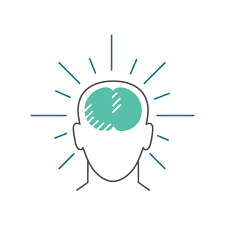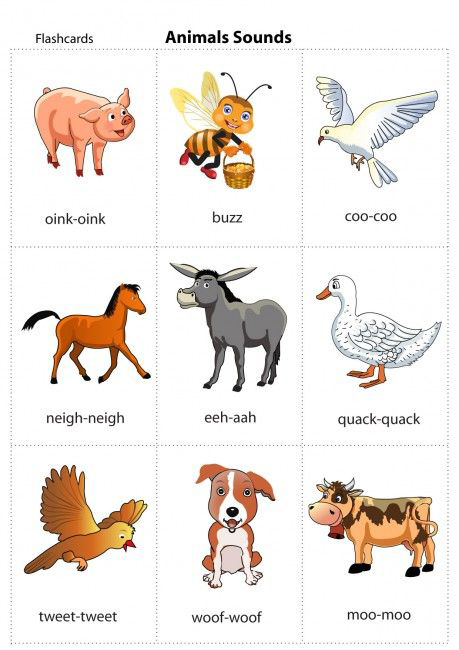Flashcards have been in classrooms for hundreds of years, they’re easily available at stores and you can even make your own at home! With technology of this era, the classic educational tool is arguably becoming the most boring one, too – so we challenge that mentality with 7 different ways to use flashcards without taking the fun out of learning!
Where to buy Flash Cards
Right Brain Training
Between 6 months to 15 months old, you can introduce flashcards into their everyday routine to flex the right brain. When you’ve settled down your young ones, flip through the cards at a rapid rate while you say out the names. Unconsciously, the children will process this information through the right hemisphere of their brain. Repeat this daily for a few minutes with the same set of 20 – 30 cards preferably from the same theme; like farm animals, clothes or food. When your tots begin to show restlessness, stop the activity and replace the set of cards with a new theme during their next session.
Sight word Flash CardsDon’t prolong the session beyond what your child is comfortable with as this might dull their interest in learning. At that young age, they will absorb knowledge in other forms of interaction so you need not worry about missing 1 day of flashcard activities even though consistency is recommended for a better effect.
Speech and LanguageCombine a deck of flashcards from 2 categories and put them in a pile on the floor. Label the two categories onto a bowl or paper bag and ask the children to put the cards where they belong. Sorting and classifying is a fundamental block of mathematics that sets children on a systematic train of thought while honing their ability to recognise patterns and number groups which will eventually help with multiplication and problem solving.
Flashcards For KidsOlder children can manage more than 2 categories or even overlapping themes. Increase the difficulty by introducing the concept of Venn diagrams or similar looking cards like different shades of red and blue.
Preschool FlashcardsLay out 6 picture flash cards in a line and read out the names in a rhythmic way: pig, horse, frog, dog, donkey, cat. Snap your fingers as you read to help establish the pattern. Get the children to repeat after you while you maintain the same beat. Once you feel like they’ve got the hang of it, remove the first picture card and repeat: pig, horse, frog, dog, donkey, cat. Keep doing this until the young ones can recall all the animals without the flashcards on their own. On top of stretching their memory, you’re also teaching them visualisation skills.
Picture FlashcardsFor children who find the above memory work too easy, you can increase the difficulty level by laying out 10 cards on the board, give them 20 seconds to look at it before you remove them. As they recall the 10 different cards, place them back on the board in its original position or ask the little ones where the card’s original place is.
English FlashcardsApplication of Vocabulary
Images on the flashcard probably don’t look similar enough to the actual objects in real life. Incorporate learning into your lifestyle by attaching the flashcard to the actual objects; for example leaving the sock card in the sock drawer. When children know how to apply their classroom knowledge, it brings context to their learning which will build their enthusiasm for the next lesson.
Kids flash cardsIf your little ones don’t respond to the cards that are strategically scattered throughout the house, bring the items out during their next flashcard session for a fun activity – hold out a jacket and ask for the matching card in return or vice versa.
Flash cards are an age-old method for improving students’ abilities to recall information and understand concepts. There’s a reason flash card are just as popular today as they ever were — they do their job, and they do it well. Teachers often use this technique when introducing a new topic, while many students use it as a go-to method when studying for exams and assessments. When helping your children study at home, flash cards can become your best friend and favorite tool. Let’s take a closer look at how flash cards actually help your children learn and how you can use this classic technique.
Why Do Flash Cards Work?
Animal Flash CardsWhen used correctly, flash cards allow students to interact with information in a way that makes it easier to retain. Flash cards are strategically designed to enhance and encourage active recall. The format, usually a question on one side of the card and the answer on the other, requires learners to look at one side and recall the information from the other side.
Toddler Flash CardsPracticing active recall creates stronger neural connections in the brain — making it a very effective method for improving memory. If your child struggles with certain flash cards, you can repeat those questions more frequently than the other cards to establish a better connection. This process is called confidence-based repetition, and scientific research shows it to be an extremely effective way to improve memory.
Educational Flash CardsAs your child engages active recall and confidence-based repetition, flash cards allow for another process called spaced repetition. This technique states that spacing out intervals between studying the same information again will increase the chances of recalling that information, and flash cards do this naturally. As you run through your deck of cards, there will be a natural space of time before the same card appears again. Repeating that information after a period of time helps create permanent memories, whereas cramming and forcing the information in a short time doesn’t help it to stick. Flash cards also further develop children’s meta-cognition, when they judge their own performance based on the number of cards they “get right” or remember.
Baby Flash CardsPerhaps one of the greatest perks of flash cards is that your child can use them without support. Instead of being reliant on another person to ask questions or track answers, you can encourage your child to study independently with flash cards.
Where to buy Flash CardsThe left brain is conscious and logical, takes in information slowly and likes repetition. The right brain is subconscious and intuitive, takes in information quickly and requires no repetition.
There is a part of our right brain that actively functions when we are imagining or dreaming. This is known as the image brain. It creates mental images from information received from the body cells. Some people with a strong photographic memory are able to recall any information from books or pages they have seen; each page can be viewed on the screen of their mind as if it was a snapshot.
Sight word Flash CardsResearch has proven that young children benefit from stimulation of the right brain by quick flashing of cards especially when the sessions are enjoyable, relaxed and brief. Materials can always be new and interesting with different pictures, words, facts or problems. Before the left brain becomes dominant at age six or seven, there is a window of opportunity where the right brain is dominant. Dr Makoto Shichida, world-renowned founder of over 350 Preschools Child Academies in Japan, said that presenting large amounts of information at fast pace to infants, toddlers and preschoolers stimulates the right brain and can activate photographic memory.
Speech and LanguageTechnology Meets Beauty
Young children generally have a very short span of attention as they are too fast and smart to learn about everything: they are able to learn within 90 seconds and very eager towards information.
While traditional flashcards provide benefits to stimulate the right brain through flashing of static images, Animal 4D+ Flashcards deliver circus of 26 animals in a beautifully crafted Augmented Reality Program. Each animal is presented in sketch mode, placed in ascending alphabetical order.
After scanning the cards with Animal 4D+ app in smart devices, they will instantly transform into 4D animals – pronouncing the correct spelling of the animal’s name and the corresponding sounds by the animals. All animals are richly designed in polished detailed graphics. Categorized as an educational application, it provides scientific information on the right section of 2D or 3D on your device – explaining its Kingdom, Phylum, Subphylum, Class, etc.
Flashcards For KidsEducation is no longer boring
Augmented Reality enhances users into the next level of learning. Animal 4D+ has arrived to bring a brand new level of experiencing education application to everyone, especially children. Both children and adults can experience four dimensional worlds. Moreover, they may enhance their learning abilities through fun and interactive media. You can touch, listen, turn the screen, explore and observe the animals. Users of all ages can witness how the animals come alive in their hands.
Preschool FlashcardsSome useful tips in learning with Animal 4D+ Flashcards
1. Limit the number of cards shown each session
Like any toys, children below four years old have short span of attention, hence simply show them maximum 5 animal cards each day
2. Adult supervision is advised
Yes, it’s harmless but as the use of smart devices is required to create the effect of 4D, adults supervision is advised
3. Engaging and interacting with children
To make the lesson fun and fruitful, show them the animals, explain to them the fact about the animals and ask them what they think about each animal.
4. Entice their curiosity and interests
Picture FlashcardsIf your child seem very enthusiastic to play with all cards, it’s still best not to give them all at one go, limit the number of cards to be learnt in each session so they won’t be easily bored and will ask for more by the next session
Have fun and enjoy learning with animal 4D+ Flashcards !
(Some information for this article are taken from the book “Babies Are Geniuses” by Dr. Makoto Shichida, world-renowned founder of over 350 Preschool Child Academies in Japan)
Article contributed by:
English FlashcardsDIYFlashcard_ThumbDIY FLASHCARD AND EDUTOYS is an exciting start-up company based on Singapore continuously promoting a line of educational tools for children in a fun and engaging way possible. We are now proudly the distributor for Singapore market promoting new product called Animal 4D+ Flashcards, where flashcard advances to the new level of innovation with Augmented Reality Technology – creating possibility of live interaction with various animals
Baby Flash Cards Animal Flash Cards



























0 Comments
We love comments! We appreciate your queries but to protect from being spammed, all comments will be moderated by our human moderators. Read our full comment policy.
Let's enjoy a happy and meaningful conversation ahead!